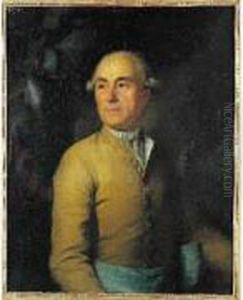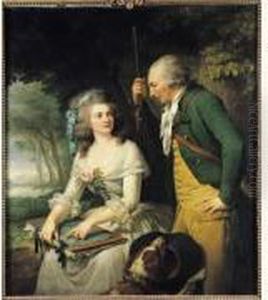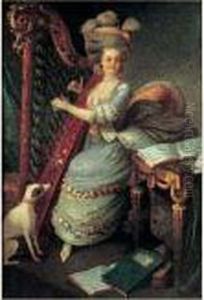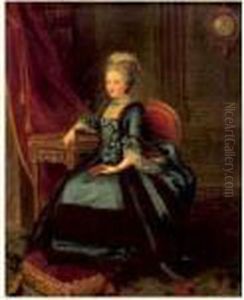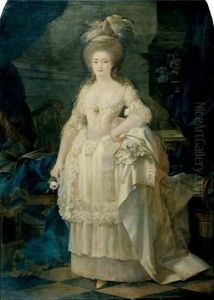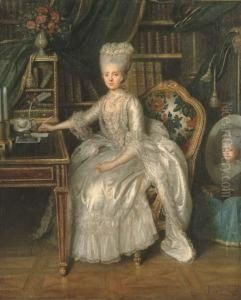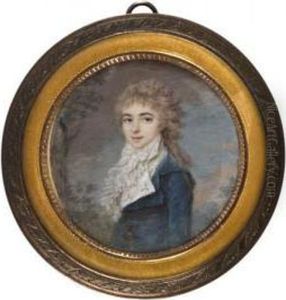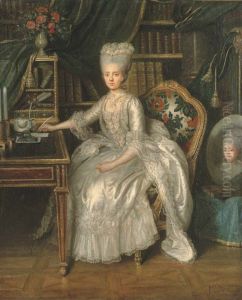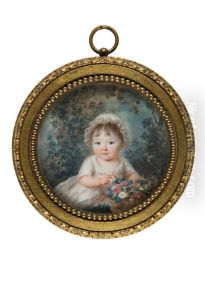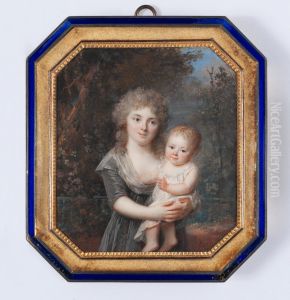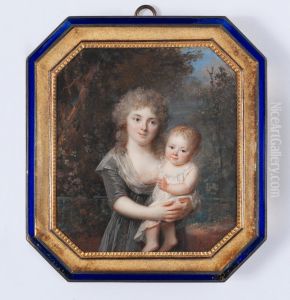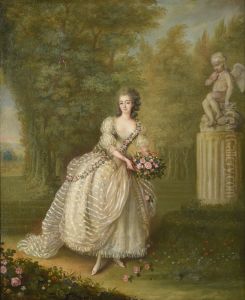Lie Louis Perin-Salbreux Paintings
Lie Louis Perin-Salbreux was a French painter born in 1753 in Reims, France. He is primarily known for his portrait paintings, miniatures, and landscapes, which reflect the transitional period between the Rococo and Neoclassical styles that characterized the late 18th and early 19th centuries. Although not as widely recognized as some of his contemporaries, Perin-Salbreux's work provides valuable insights into the social and artistic milieu of his time.
Perin-Salbreux initially trained under local artists in Reims before moving to Paris, where he further developed his artistic skills. In Paris, he was exposed to the works of leading artists of the day and the evolving Neoclassical style, which began to influence his work. Despite the competitive art scene in Paris, Perin-Salbreux managed to gain recognition for his portrait miniatures, which were highly prized by the French aristocracy for their delicacy and precision.
Throughout his career, Perin-Salbreux exhibited at the Paris Salon, the official art exhibition of the Académie des Beaux-Arts in Paris. His works were noted for their elegance, attention to detail, and the psychological depth he brought to his portraits. Unlike many of his contemporaries who focused on grand historical or mythical subjects, Perin-Salbreux excelled in the more intimate genre of portraiture, capturing the nuances of character and emotion of his sitters.
The French Revolution and the turbulent years that followed had a profound impact on Perin-Salbreux's life and work. During this period, the demand for luxury goods, including portrait miniatures, declined sharply. Perin-Salbreux adapted by turning to landscape painting and larger-scale works, but these never achieved the same level of success as his earlier portraits.
Lie Louis Perin-Salbreux died in 1817 in Reims, where he had returned later in life. Although he never achieved the fame of some of his contemporaries, his work has been reassessed in recent years, with art historians recognizing his contribution to French art, particularly in the field of portrait miniatures. His paintings are now held in several museums and collections in France and around the world, appreciated for their charm, technical skill, and historical value.
